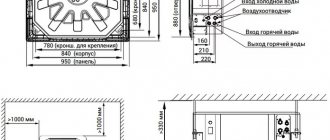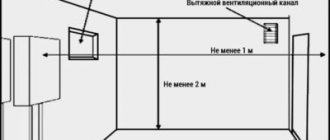What to do if the heating is not turned on for a long time
The order of appeals regarding the failure to provide a utility service or the provision of a utility service of inadequate quality is the same. It is detailed in the article about the problem.
But the essence of such appeals is different. If the problem of hot rusty water can be regarded as a certain discomfort, then the increasing cold outside the window, and after this, the cold snap in the apartment does not dare to call the language an ordinary household inconvenience. Therefore, the emphasis of all your statements should be made on a direct threat to health, the inability to avoid hypothermia, as a result of the lack of heating in the apartment.
The transfer of heating / heat supply systems to summer mode / heating is turned off only after the order of the person responsible for housing and communal services and utilities (deputy mayor for these issues) has been adopted and signed (at least in our region of the Volga region, as our regional media informs us ). This takes into account three factors:
- Season / time of year - heating systems will not be turned off in December, January or February. Heating systems are turned off in the spring - from early April - to mid-May (depending on the region)
- Weather forecast. The decision to end the heating season is made by the relevant persons in accordance with forecasts of weather forecasters, taking into account the likelihood of sudden cold snaps (with projected prolonged frosts, the timing of heating shutdowns is postponed).
- Outdoor temperature - if the average daily temperature for at least 5 days is +8 degrees and above. The transfer of heating systems to the summer period (shutdown of heating systems) must start from the next day after this (5-day) period.
To turn off the heating, the ambient temperature must be + 8 for five days. Or you can calculate the day of the shutdown yourself. It is necessary, starting from the day the heating is turned on, add the heating period of your region to this day. Get the exact day the heating will turn off in your area. The heating period is the number of days during which heating is supplied to apartments and other buildings. For example, for Moscow - the heating period is 145 days, for Cape Chelyuskin - 311 days.
All heating periods in Russia can be found on the website.
As far as I know, heating is turned off when the average daily air temperature outside reaches eight degrees Celsius. But very often I notice that in fact, this is not entirely true. Typically, the heating season ends in April, when the average daily temperature significantly exceeds the established norm.
Schedule of heating shutdown in cities of Russia in 2020
The decision to end the heating season is taken by the local authorities. So far, not in all regions, officials have decided when they will turn off the heating.
However, an approximate schedule can be drawn based on the situation last year. It is expected that heating shutdowns in many Russian cities will occur in the first or second week of May. Somewhere it happened earlier, somewhere the officials have not yet decided on the exact date.
Information on other cities and more exact dates can be found on the website of the mayor's office or local government.
| City | Heating cut-off date |
| Moscow | May 2-3 |
| St. Petersburg | May |
| Voronezh | April |
| Volgograd | May |
| Saratov | April 22-23 |
| Rostov-on-Don | April |
| Rostov | April |
| Kursk | May |
| Omsk | April 21-22 |
| Lipetsk | April 23-24 |
| Novosibirsk | May |
| Chelyabinsk | May |
| Samara | April |
| Penza | April 22-23 |
Reasons for the untimely start of the heating season
It would seem that with such good legislation, a responsible attitude of utilities to their duties, there is no reason to doubt that heating in our apartments will be turned on this year as well. Why is it that especially impressionable citizens regularly annoy officials with numerous complaints and incomprehensible questions about what they say they are freezing and when they will turn on the heating?
Unfortunately, there are enough reasons to doubt the timeliness of the heat supply, I will list only a few:
Ordinary bungling imposed on force majeure. An example, from the Vologda region, where an entire village in November 2020 was left without heating. The reason is that they could not bring fuel to the local boiler house because of the washed-out roads. According to the logic of local authorities, for the delivery of fuel, the soil needs to freeze for 2 weeks at minus 10-15 °. Here is such a vicious circle, it turns out that in order to keep warm, you first need to freeze.
Such cases, despite their absurdity, they often happen every year and there is no complete certainty that something like this will not happen the next year in your city, with your home.
If you follow the fifth point of the mentioned decree and the unpredictable oddities of the weather exactly, then the supply of heat, on quite legal grounds, will easily be postponed until early November. For example, the air temperature in Perm on October 16, 2020, day and night was +10 degrees, although on September 11 it was + 3 ° at night, and if the Perm authorities followed the instructions exactly, and not common sense, then the Permians would wait for the heat in their apartments no earlier than 23 October.
There are frequent cases when in the so-called preparatory period, no one prepared anything, and winter came, somehow again unexpectedly. Sad but true! An emergency patching up of problem areas begins, the search for resources of which is not available in life, but gradually everything, in some miraculous way, comes back to normal. But the citizens had to freeze again for a month or two, but this is the cost of the harsh Russian climate.
It is easiest to scold officials from housing and communal services, they are almost disembodied in their inaccessibility and isolation from the needs of the administration, but most often the reasons for poor-quality heat supply are much closer and in order to solve them, it is not necessary to communicate with the President. The goodwill of the residents of the house and the willingness to fix problems on their own is enough.
Heating technical problems
Low intrasystem pressure and, as a consequence, poor circulation of the coolant. The malfunction occurs due to the increased hydraulic resistance of the system, or, more simply, clogging of pipelines, filters, valves.
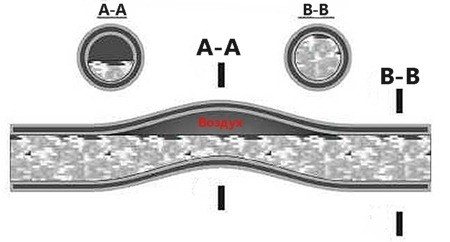
- Periodic airing. It is possible that the reason for the occurrence of such a malfunction was laid down at the design stage or was admitted during installation work.
- Insufficient coolant temperature. Most often, the loss of temperature occurs due to insufficient thermal insulation of the heating main, but it may very well be that the heat load for heating was initially calculated incorrectly.
- Imbalance and illiterate adjustment of the heating system.
Not all problems with heat supply are associated with the development of the resource of the in-house heating system. Sometimes, the residents of the house themselves become the culprits of the malfunctions. Rather, only a part of them. Particularly advanced citizens consciously or unconsciously change the design of the system, disrupting the uniform distribution of heat on all floors. Here are typical examples of homemade products:
- Increase in the number and (or) area of radiators.
- Connection of additional heating devices. Water underfloor heating, indirect heating water heater.
- Installation of an additional radiator for heating the balcony, loggia.
When do they turn on the heating? And what if they don't include it?
12.09.2019
Heat / Heating batteries
In Russia, as you know, winter sneaks up unnoticed. For public utilities it often becomes a big surprise, and for the townspeople it is a reason to once again ask the questions "When will the heating be provided?" and "Where to complain if he is not there?"
At what temperature the heating is turned on
The timing of the start of the heating season depends on the weather, which is regulated by the "Rules for the provision of utilities" approved by the Decree of the Government of the Russian Federation on May 6, 2011 No. 354.
The Rules say:
The heating period must begin no later than and end no earlier than the day following the day of the end of the 5-day period, during which, respectively, the average daily outdoor temperature is below 8 degrees Celsius or the average daily outdoor temperature is above 8 degrees Celsius.
This norm is fixed in the first paragraph of the fifth paragraph of the Rules, you can see their text in full at the link https://base.garant.ru/12186043/
Thus, the requirements of the legislation boil down to the fact that if for five days in a row the average daily temperature was below + 8 ° C, then the utilities must turn on the heating. They can do it earlier (such a norm has appeared since December 2020), but later - it is impossible! This would be a clear violation of the law.
Can the heating be turned on earlier? The answer is yes - yes, you can, but not in all cases. Residents of an apartment building have the right to hold a meeting and send an application to the heat supplying organization for early heating. For the application to be approved, the following requirements must be met:
1. Your house must be ready for the heating season. That is, all pipes must be in good working order and all test work must be completed. You can find out about this in your management company (or HOA).
2. It must be technically possible to turn on the heating in this house (that is, can this house be turned on separately, without connecting to the heating of the whole block). You can find out about this in your management company.
3. A common house heat meter should be installed in the house. Your Criminal Code also knows about it.
4. If all of the above conditions are met, then residents can write a statement and send it to the heat supply organization. And your house should be connected to heating earlier than usual.
The heating season has begun, but the apartment is still cold
Now let's consider the situation when it is stably cold outside, the heating season is long overdue to begin - however, the batteries are still cold, and receipts for heating regularly come. What to do? There are options here.
If it is only cold in your apartment, and the neighbors have been hot for a long time, then it is quite possible that the whole point is in an ordinary airlock in the networks. This problem should be helped to solve in your Criminal Code. You should also pay attention to the condition of your own batteries - if they were painted so many times that the paint layer reached a thickness of a centimeter, then it is better to replace the batteries.
The batteries are new, there are no traffic jams, but is it still cold at home? In this case, it is necessary to require the Criminal Code to record this fact in the act. It is possible that the employees of the management company, for some reason, will not be able to do this (or will not want to). Then invite your neighbors (at least two) to visit - and in any form draw up an act on the temperature in the apartment.
What temperature is considered acceptable is regulated by the relevant sanitary and epidemiological rules and regulations (SanPiN). We present them below.
What should be the temperature in the apartment: SanPiN 2.1.2.1002-00
| Premises | Air temperature (in degrees) | |
| optimal | permissible | |
| Living room | 20-22 | 18-24 |
| Kitchen | 19-21 | 18-26 |
| Restroom | 19-21 | 18-26 |
| Bathroom | 24-26 | 18-26 |
| Interroom corridor | 18-20 | 16-22 |
| Lobby, staircase | 16-18 | 14-20 |
| Pantries | 16-18 | 12-22 |
Heating is not included - how to file a claim?
After drawing up the act, apply with a written claim to your Criminal Code or to the heat supply organization - in the event that the contract is concluded directly with it. In the claim, indicate the inadequate provision of services and demand a recalculation, which is made based on how many hours (or days) you did not have heat in the house.
The law allows a heating break of no more than 24 hours (in total!) Within one month and no more than 16 hours at a time - if the air temperature in residential premises is from + 12 ° C.
If the thermometer shows from + 10 ° С to + 12 ° С degrees, then the heat supply can be delayed for no more than 8 hours at a time. Temperature from + 8 ° С to + 10 ° С degrees? Then the "threshold of patience" is 4 hours.
For every hour (in total for the billing period) that exceeds the permissible duration of the heating break, the amount for heating indicated in the receipt is reduced by 0.15% of the usual payment, which is determined based on the readings of metering devices or (if they are not available) from the current standards ...
How the claim is filed is also important. Firstly, it must be in two copies - on one of them the secretary puts a stamp, his name and signature, time and date of receipt - and returns it to you, the organization leaves another copy for itself for consideration.
"Just to be sure", you can send a claim by mail, with a return receipt. If you call by phone, then be sure to ask to inform you of the call number indicated in the log book, as well as the name of the person who accepted the claim.
If you have an agreement with a resource supplying organization in your hands, then take a look at it - often it indicates the method of filing a claim (for example, only by phone or only by mail). All this is done not out of love for bureaucratic red tape, but in order to have an evidentiary base of your innocence if the case comes to court and other instances.
For the same reason, be sure to ask for a written response to the claim. And you will have to recalculate the next month.
Perhaps, the representatives of the Criminal Code, during the consideration of your claim, will find that the temperature in your house is quite tolerable. Then contact the Prosecutor's Office, as a body supervising the protection of rights, file a complaint with Rospotrebnadzor, referring to the Housing Code of the Russian Federation, the Law on Consumer Rights Protection, the Civil Code of the Russian Federation, Decree of the Government of the Russian Federation No. 354 "On the provision of utilities to owners and users of premises in multi-apartment houses and residential buildings "
When applying to the courts, the defendant is the management company (or HOA, depending on which management your house is located in). Remember, your goal is to achieve recalculation and compensation for non-pecuniary damage.
By the way, contacting the local media often helps.
Turning on the heating "do it yourself"
Finally, about what problems may arise if you solve the problem of cold in an apartment, as they say, on your own.
It is not uncommon for the owner to alter the in-house heating system, for example, installing additional radiators or equipping a “warm floor”. But if the coolant is cold, then it does not help much. It seems that the transition to electric heating (electric boilers, warm floors, convectors, etc.) looks more justified.
However, it is worth knowing that the legislation is skeptical about such actions. The owners can, for example, in this case be fined in accordance with article 7.21 of the Code of Administrative Offenses of the Russian Federation "Violation of the rules for the use of residential premises." And this is the best case. The consequences can be even more severe.
According to article 293 of the Civil Code “Termination of the right of ownership to the mismanaged contents of a dwelling”, the owner of an apartment who decides to unauthorized re-equipment may face deprivation of property. It is formulated as follows:
“... If the owner of a residential building uses it for other purposes, systematically violates the rights and interests of neighbors, or misuses housing, allowing its destruction, the local government may warn the owner of the need to eliminate violations, and if they entail the destruction of the premises, it can also set a time limit for renovation of the premises. If the owner, after the violation, continues to violate the rights and interests of neighbors or use the dwelling for other purposes, or does not make the necessary repairs without good reason, the court, at the suit of the local government, may decide to sell such a dwelling at a public auction with payment to the owner of the proceeds from the sale. funds minus the costs of the execution of the judgment ”.
In addition, there is article No. 330 of the Criminal Code of the Russian Federation "Arbitrariness", according to which
“Unauthorized, contrary to the procedure established by law or other regulatory legal act, the commission of any actions, the legality of which is disputed by an organization or a citizen, if such actions have caused significant harm, is punishable by a fine in the amount of up to eighty thousand rubles or in the amount of wages or other income of the convicted person for a period of up to six months, or compulsory labor for a period of one hundred and eighty to two hundred and forty hours, or correctional labor for a period of one to two years, or arrest for a period of three to six months. "
Of course, the question may arise: what kind of "harm" and "damage" that can be caused as a result of re-equipment of the heating system of an apartment? The answer here is this: if there are deviations from the design heat supply scheme for an apartment, the hydraulic regime in the internal heat supply system and the heat balance of the entire building may be violated. As a result, it became really warmer in the apartment, where the water “warm floor” was made, and colder in other apartments.
In turn, when installing electric heating, the load on the general power supply system increases at times, this is fraught with accidents. Especially their risks increase if the transition to electric heating is massive. In this case, "blackouts" are possible, affecting entire areas.
The bottom line? The transition to electric heating is certainly not a panacea and is far from always justified. Practice shows that in most cases it is easier to get high-quality central heating from public utilities than to completely abandon it and switch to alternative methods.
Temperature standards for heating radiators in an apartment
- When using two pipes for hot water supply, the maximum permissible temperature is + 95 ° C.
- When a single-pipe structure is used in a building, the temperature of the water in the heating system of an apartment building, according to GOST, should be no more than + 115 ° C.
In order not to overpay for the resource not provided, an individual heat meter should be installed in the apartment. Battery thermostats are also relevant for indoor climate control. In this case, the owner will not have to measure the heating level of the coolant inside the radiator.
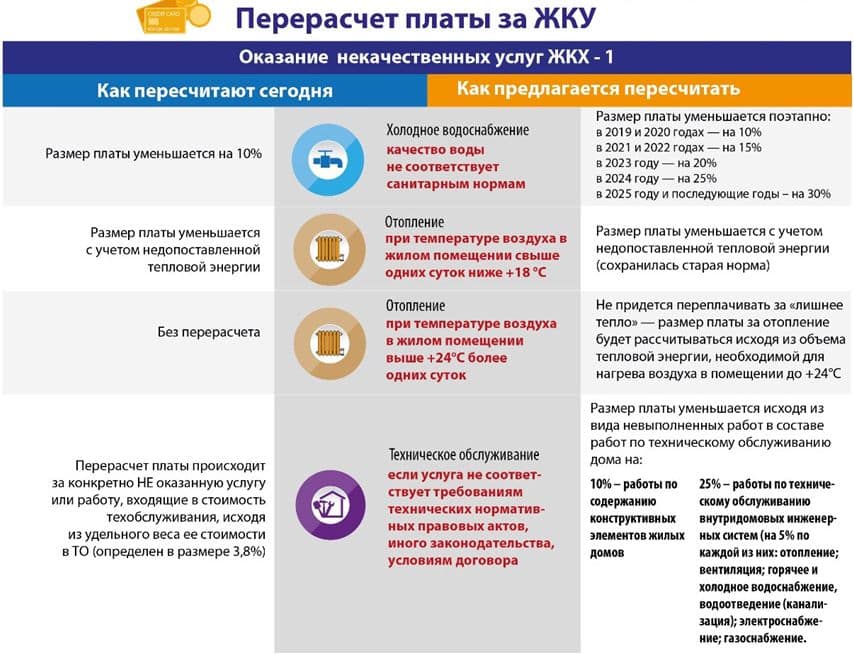

Recalculation of fees for low-quality housing and communal services.
If it is not technically possible to embed a thermostat and an individual metering device, then the only way out is to install a common meter for the entire MKD (ODPU).
In the case when the temperature in the heating system of an apartment building stays above + 100 ° С for a long period, it should be signaled to the UK and the local CHP. Ignoring the situation will lead to boiling water, which is fraught with a pipe break.
The heating level of the battery can be measured at home by attaching an ordinary thermometer to the radiator. To the obtained value, add 2 ° С - for more accurate measurements, an infrared thermometer is used.
What should be the average daily temperature for the start of the heating season
The temperature schedule for supplying coolant to the heating system directly depends on weather conditions. The start and end times of the season are influenced by the average daily thermometer.
The indicator is calculated based on measurements of street temperature every three hours throughout the day. Then all indicators are summed up and divided by 8. Measurements are carried out for five days in a row.
The average daily temperature level according to the current standard for all regions of Russia is 8 ° C.
At what temperature the heating is turned off
In order to make a decision to turn off the heating, the State Committee of Meteorologists takes average daily measurements of street temperature.
The procedure is carried out according to the principle: every three hours during the day, the level of the environment is recorded. The results are summed up and then divided by the number of measurements in 24 hours. As a result, the average daily temperature is calculated.
If, as a result of the operation, the indicator is higher than 8 ° C, then an official decree is drawn up, which is sent to the municipal authorities of the region. The administration, in turn, endorses the decision and sends a mailing to the heads of local thermal power plants and housing and communal services.
MOEK schedule for spring 2020
To date, heating in Moscow is still working, but the authorities have already considered a decree that contains information on the shutdown of heat. It will take place on April 26th. But these data are not accurate either, since it all depends on what the weather conditions will be.
If you focus on the current standards, then heating in Moscow will be turned off when the air temperature holds at 8 degrees for 5 days. But, on the other hand, at the legislative level, this period should have a clear framework.
The long-awaited warmth in the apartments - what awaits us every year
Owners of housing in apartment buildings are constantly tormented by the question of when the heating season will begin this year. There are strict technological criteria for the operation of district heating, which heating companies are forced to comply with. On the basis of the approved SNiP, a budget item is formed, into which state funds are allocated, spent on heating utility facilities and housing stock. Depending on the duration of the heating season, appropriate fuel reserves are created at the CHPP, a schedule of planned preventive measures in the maintenance of heating mains is built.
In theory, the main parameter that utilities pay attention to in the process of preparing a new heating season is a steady decrease in the ambient temperature. If for a long time the average daily temperature outside does not exceed 10 0 С, one should expect a long-awaited warming of the microclimate in apartments.
However, this is in theory, in practice, everything is much more complicated.
For example, in the Arkhangelsk region, the cold period begins a month earlier than in central Russia, not to mention the southern regions. According to weather forecasters, the temperature in September can be 15-17 0 С, for example, in Moscow and the Moscow region, while in the Urals and Western Siberia this figure can drop to 8-10 0 С. In each case, utilities expect accurate forecasts from weather forecasters , focusing on their data in determining the expected date of the start of heat supply to the heating plant.
Prolonged Indian summer, unforeseen warming in the middle of autumn, can make significant adjustments in the timing of the start of heat supply to city apartments. Each year brings surprises in this regard, especially considering the constantly changing climate on our planet. A sharp cold snap in September can be replaced by unexpected warmth in October, when everyone is eagerly waiting for the heating to be turned on. In this case, confusion arises.Sometimes the energy company - the entity that supplies heat to your homes, despite the warming, turns on the heating on time. Then it gets hot in your apartment, like in Africa. You are forced to open the vents and ventilate the apartment, wasting precious heat to nowhere.
And vice versa. In a situation where the next warming has pushed back the timing of turning on the heating, you enjoy the warmth outside, and the cold comes again unexpectedly. In this case, both you and the heat supplier will be caught off guard. Sanitary rules and regulations in this case are the main documents for public utilities that give the right to start centralized heating. Otherwise, for violation of the approved norms, heat and power companies may be held administratively liable.
When the heating is turned on
Although it is generally accepted that the heating season in most regions begins in mid-October, there are no exact calendar dates for the switching on of central heating. And in mid-October, warmth really comes to most apartments, but this is due to the fact that by this time it becomes obvious that the cold has come seriously and for a long time. If during this period it is still warm, then the central heating may not be turned on; and vice versa, in some regions, heating begins almost from the beginning of October.
In fact, boiler houses are started not just at the request of one or another official, but in accordance with the current standards and sanitary rules that are established for housing and communal services. So, for each specific region, central heating is included in its own terms, which are calculated taking into account climatic and geographical features. For this, data from long-term synoptic observations are also used.
So, under what conditions do you turn on central heating? It is impossible not to mention the strict technological criteria for the operation of centralized heating systems, which are important to observe for all heat supply companies. Moreover, it is on the basis of approved SNiPs that a budget item is formed, from which heating of objects, for example, the social sphere, educational institutions, and so on, is financed.
Recommended: Features of the central heating fee with autonomous heating
And in order to stock up on time with the necessary amount of fuel for the CHPP, it is important to know the approximate duration of the heating season. Also, depending on these terms, service schedules and planned preventive measures are drawn up.


Heating system of an apartment building
However, the timing of turning on the heat supply to apartments is influenced not only by the outside temperature, but also by the technological readiness of all systems. Therefore, in the localities, a lot often depends on the conscientiousness and professionalism of officials and heads of heat supply organizations.
As a rule, in order to determine at least the approximate timing of turning on the heating, first of all, they pay attention to a steady decrease in the air temperature outside. So, if the average daily temperature remains at a level of no more than plus ten degrees for a long time, one can already hope to turn on the heating.
However, in practice, everything is much more complicated. So, if we take the Arkhangelsk region as an example, then the heating season begins there a whole month earlier than in central Russia. But the temperatures are noticeably different in Moscow, and in the Urals, and in Western Siberia. So, if in the Moscow region in September it can be 15-17 degrees, then in Siberia at this time it is already 8-10 degrees. But in each specific case, utilities are still most often guided by the accurate forecasts of weather forecasters, unless, of course, all systems are ready for work.
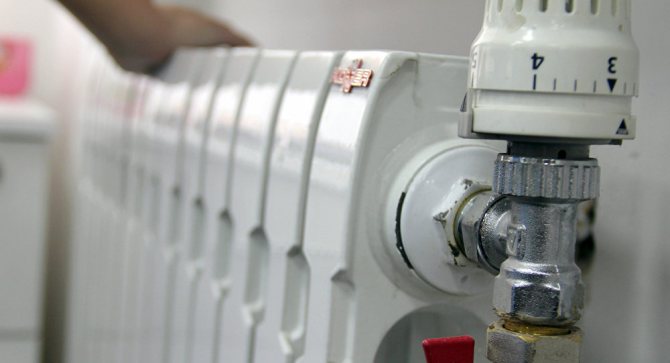

If the Indian summer is still coming, and the unforeseen heat continues in September, then the utilities can make significant adjustments in the timing of the beginning of the heating season.Therefore, almost every year we are not immune from surprises. Moreover, as scientists say, and we all noticed a long time ago, the climate on the planet is changing.
This means that a sharp cold snap in May or September, or a warming that comes in October, is not excluded. Because of this, there is often confusion on the ground, for example, utilities still turn on the heat, and it becomes unbearably hot in the apartments. And then we release such expensive heat into the street through the window.
We recommend: How to write a refusal from central heating in favor of individual heating?
But there may be a reverse situation. The timing of the beginning of the heating season has been shifted, it is pleasantly warm outside during the day, but the apartments begin to cool down quickly at night. And the cold usually comes suddenly. Therefore, more often than not, it again turns out to be a surprise for us.
It is because of this that it is so important to comply with sanitary standards and rules that allow utilities to start heating under certain conditions. And even administrative liability is provided for violation of such norms for energy supply companies.
Authorities for filing a complaint in the absence of heating
In case of problems with heating, improper quality is recorded or the batteries are cold, do not neglect the rights of the consumer. You should complain to the authorities.
The filing of claims is carried out sequentially, that is, without writing an application to the Criminal Code or housing and communal services, it is useless to apply to the prosecutor's office. Only after receiving refusals or on the fact of inaction, it is allowed to send claims to higher authorities.
The list of oversight agencies is presented on an increasing scale:
- Housing and communal services, ZhSK, UK or HOA;
- Housing inspection;
- Russian consumer supervision;
- communal department of the settlement;
- local heat and power plant (CHP).
Sample complaints can be downloaded here:
- The inaction of utilities.
- The complete lack of heat supply.
When resolving heating problems, owners should rely on the current standards for supplying and disconnecting heat in apartments. It makes no sense to enter into a conflict with the management company or RNO, if the room is not thermally insulated. The experts also point out that there must be grounds for filing a complaint about insufficient heating or heat.
It is the responsibility of the residents to monitor the temperature in the apartment and the degree of heating of the radiators. In case of deviations from the norm, the management company or the MKD board of directors should be reported.
Watch the video: “The best way to heat when there is no gas. On the example of Finland. "
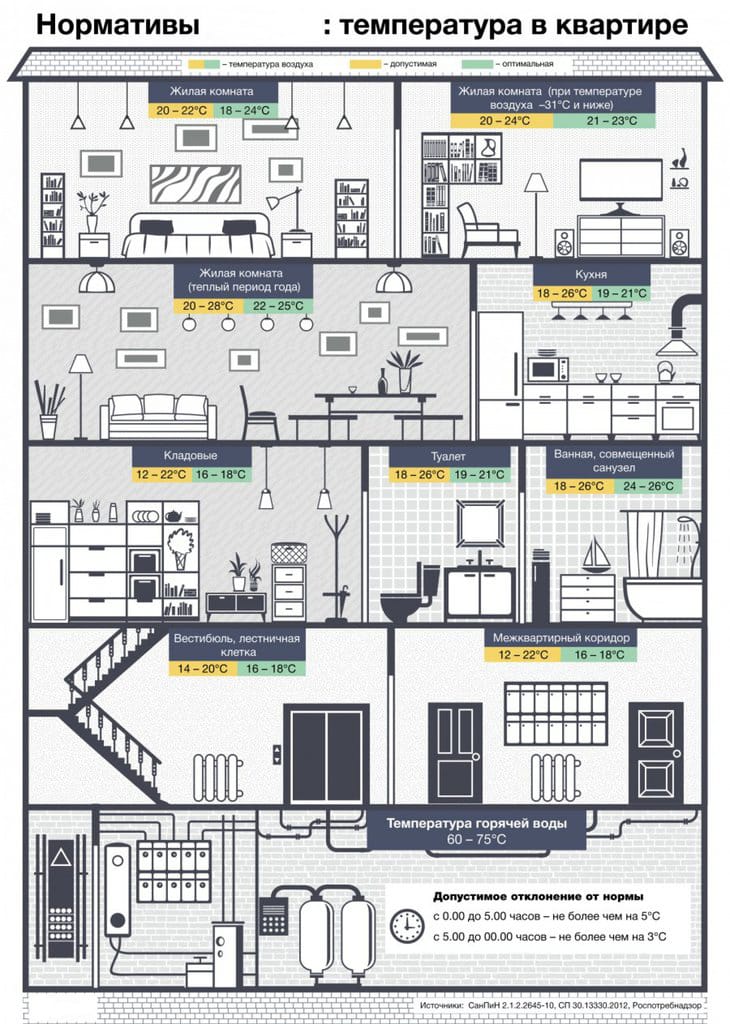

Free consultation by phone! Moscow and region:; St. Petersburg and region:
At what temperature the heat supply is turned on


Often consumers ask themselves the question, at what actual temperature should heat supply be turned on?
By the decree of our government of 23.06.2006, about the procedure for presenting housing services to citizens. The very beginning of the heating time is considered when the average ambient temperature per day is less than plus 8 degrees Celsius for five full days in a row.
So at what temperature do they provide heat supply !?
According to the above act, at temperatures less than plus eight and if the temperature is held for five days in a row, or at the very beginning of the heating period from October 15 to April 15.
Also, it will be useful to get acquainted with the norms of the temperature regime from the sanitary and epidemiological service, which must be in the premises for housing:
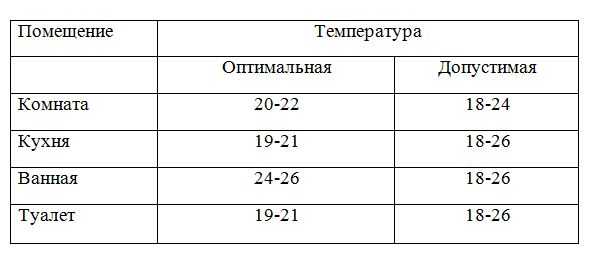

Very often the heat supply in rural houses is poor. Thanks to this, you need to try the traditional heating of a country house.
Also read: My recommendations for choosing heating pipes
Traditional heating is a good substitute in a private home
How do you carry out traditional heating? To install traditional heating you will need:
- heating batteries,
- pipes for connecting heating components,
- boiler for water
- and much more.
You can buy all this in our company.
We advise: Detailed instructions on how to build up the battery
Recommendations and Tips
- It is necessary to install water boilers closer to the living quarters, many people install boilers, as a rule, in the kitchen room, some make a specialized extension to the kitchen room, where the boiler is located.
- Based on the above, the boiler in a conventional heating system must be installed below the heat dissipators. This will increase the pressure cycle in the system, which in turn can make your home more cozy and warmer.
Note on the topic: 5 rules for filling the heating system
What to do if you have problems?
If you have problems with cold winters and low temperatures in your home. If the purchase and installation of traditional heating puts you in a difficult position, from which it is difficult to find a way out. Contact the specialists of our company, and they will install warmth in your home very quickly and with the highest quality.
Our company is ready to provide all services for the installation and connection of traditional heating of houses.
What will happen if the heating is turned off during the heating period
It is in the interest of utilities to ensure that heating is supplied throughout the heating season. Otherwise, the state provides for some sanctions.
Rules regarding the shutdown of heat energy during the heating season:
- During the heating season, the absence of heat in the house per month should not exceed 24 hours;
- If the room temperature is +12 degrees without heating, then the heating can be turned off for no more than 16 hours at a time;
- When the temperature in the room is +10 degrees, the heating cannot be turned off for more than 8 hours;
- A one-time shutdown of heating at a temperature of +8 degrees is possible only for 2 hours.
If these standards are exceeded, you can contact the utilities. For every hour of excess, your heating bill will be reduced by 0.15%.
Heating in the off-season
The off-season in the heating plan is the time between the heat cut-off in the spring and the return of the hot water supply to the pipes in the fall. The weather is unpredictable, so a sharp cold snap can occur at the end of spring. In some regions, frosts continue until May.
The state does not have the ability to open and close the valves of the CHP plant at the request of the people. Therefore, under normal conditions it is necessary to resort to additional means of heating the premises. Most often they use electrical appliances, less often gas ones.
In some private houses, additional heating takes place with the help of a wood-burning stove and stoves.
Alternative for multi-apartment buildings - liquid fuel air heaters, as well as:
- Oil-based radiators and convectors. Cons - high consumption of electrical energy. Plus - heats the room with high quality and maintains the set temperature for a long time after disconnecting from the network.
- Fan heater - they will quickly heat up the room, but when the power is turned off, it also cools down. The main disadvantage is that it dries the air in the apartment.
- The air conditioning system is expensive, but reliable and durable. By installing a split, the owner solves two problems. In the summer, you can set the optimal coolness in the house, and in the winter you can warm up (but only when the temperature outside is down to -5 ° C). Experts recommend choosing energy efficient models to reduce your electricity bills.
For your information: installing underfloor heating in apartments and houses can also solve the problem with heating in the off-season.
End of the heating season
The end of the heating season is also of great importance. After all, everyone wants to know when their home will cease to be heated.Therefore, the whole country is closely following the news about this day.
The end of the heating season, like its beginning, cannot be predicted. The fact is that it is impossible to determine exactly when it will be warm outside. Actually for this, according to the new rules, the timing of the heating season may vary.
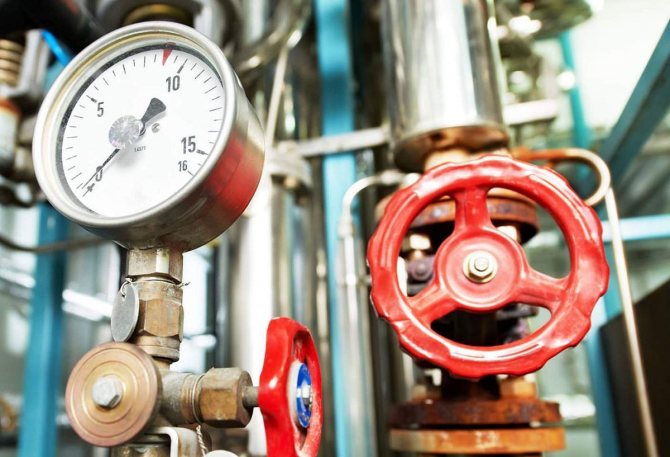

You can guess when the heating season will end by taking last year's figures into account. For example, in 2020, heating in Moscow was turned off on May 2. Consequently, we can expect that Muscovites will stop heating at about the same time in 2020. However, this forecast is not accurate, since frosts may drag on, or, on the contrary, the winter will be short. However, central heating also has its negative factors.
Cons of central heating:
- Central heating works non-stop, therefore, during the heating season, the air in the apartment is very dry;
- Sometimes, in strong porosity, pipes in the heating system can burst, because of this, interruptions are possible;
- The intensity level of the central heating cannot be adjusted, so some people may feel discomfort.
As you can see, the central heating is faulty. Therefore, many people have switched to autonomous heating of their homes.
Important points to turn off and turn on heating
Immediately with the beginning of the spring warming, many residents of the capital and other cities are beginning to be interested in the real days of heating shutdown. The following points are important here:
- Average daily temperature - this value takes into account all temperature indicators, both during the day and at night. To turn off the heating, it is necessary that the indicator is not lower than + 8 ° C and remains at this level for at least 5 days. If this condition is met, it can be expected that the centralized heating will be turned off.
- Stability of temperatures - if the condition is met, and forecasts of weather forecasters say that frosts are not expected in the region, then the city authorities may decide to turn off the heating. This decision is communicated to the district authorities, and they already inform the housing and communal services and give an order to turn off the heating.
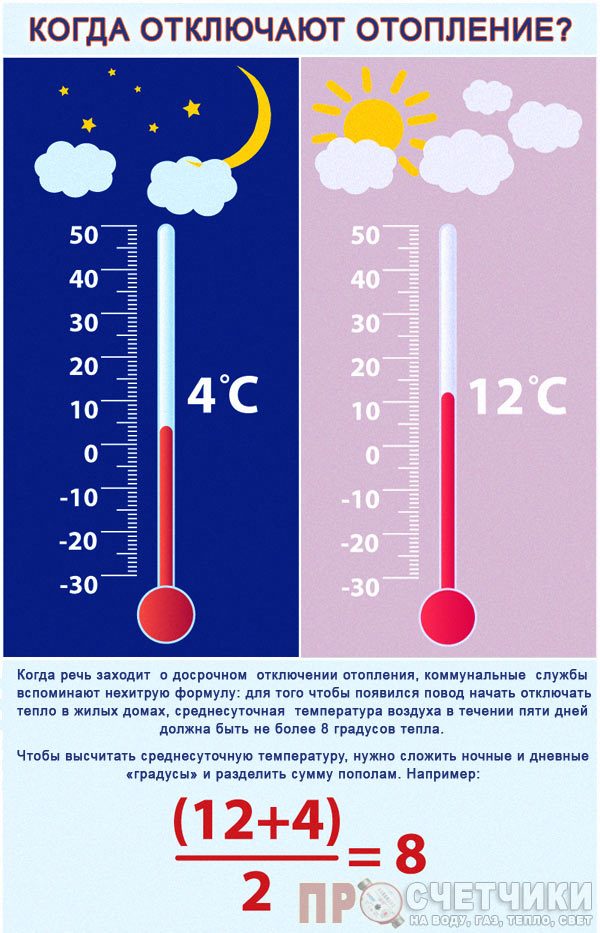

The end of the heating season and the cessation of heat supply to consumers are associated with significant financial and human resource costs. The feasibility of such a decision is determined by the city authorities, focusing on average daily temperatures and forecasts of weather forecasters for future periods. These indicators are objective, and no others will be taken into account when the heating is turned off.


There are a number of objective reasons that indicate that untimely shutdown of centralized heating is not a rational measure. The main of them, experts include:
Features of operation of heating mains and CHP
It is important here that in order to start centralized heating, all the necessary indicators must be brought to a certain level, which is set by specialists. In addition, you should create the desired difference between pipelines of different levels.
And, if in the summer it is either completely absent in heating mains, or the level is minimal, then in winter the pressure was recorded at 6-7 kgf / cm² with a supply of 3-4 kgf / cm² to the opposite. For sufficient heating of the coolant and creating a proper drop, significant energy resources are required. Moreover, this process takes quite a long time. For example, for heating only for a small city, thousands of cubic meters of coolant pass through heating mains. It follows from this that it is simply physically impossible to supply heating promptly (within a few hours after forecasters' forecasts). The end of the 2020 heating season, however, as well as the beginning of the next one, according to the order, must be accompanied by the appropriate service organizations, since these procedures are associated with an increased accident rate.For these reasons, it is advisable to plan in advance and prepare a work plan for maintenance personnel. All employees of such organizations during this period have to work, almost in an emergency mode. It is quite natural that a vacation schedule should be formed taking into account this moment in such a way that engineers and locksmiths at the time of starting / turning off the heating are in full force.
Main menu
Hello! First of all, about how the end date of the heating season is determined. For any specialist working in the thermal power industry, the fundamental document is the "Rules for the technical operation of thermal power plants". We read here in paragraph 11.7. "The heating period ends if, within five days, the average daily outdoor temperature is +8 ° C and above."
And in the "Rules for the provision of utilities to the owners and users of premises in apartment buildings and residential buildings" we read about the same, clause 5 "If heat energy for heating the premises is supplied to in-building engineering systems through centralized networks of engineering and technical support, then the contractor begins and ends the heating period within the time limits established by the authorized body. The heating period must begin or end on the day following the end of the 5-day period, during which, respectively, the average daily outdoor temperature is below 8 degrees Celsius or the average daily outdoor temperature is above 8 degrees Celsius. "
Consequently, the decision to end the heating season is made by the administration of the settlement if the temperature for five consecutive days is +8 ° C and above. Such a decision is drawn up in the form of an order (decree) on the end of the heating season, signed by the mayor, as the head of the administration. In fact, of course, the administrations of cities and villages do not strictly adhere to the point about plus eight degrees Celsius and above for five days in a row, they rather listen to this requirement. The end of the heating season is often the case, depending on economic and even political reasons. For example, the mayor of the city has elections in the summer or early autumn, then he will not sign an order to turn off the heating early. At least in the provinces this is so.
So, we figured out the date and procedure for turning off the heating. The mayor of the city or the head of the settlement issues an order or order, and the heating begins to be turned off. And here the procedure is the opposite of that when the heating is turned on. That is, first they turn off residential buildings, then hospitals, schools, kindergartens. In general, this is correct.
When switching off the heating directly in the ITP (heating units), you should also follow the procedure opposite to that when you turn on the heating. That is, first they turn off, close the house valve on the supply, and only then on the return. A house valve is a valve on the pipeline that regulates the flow rate of the coolant directly to the building or from the building.
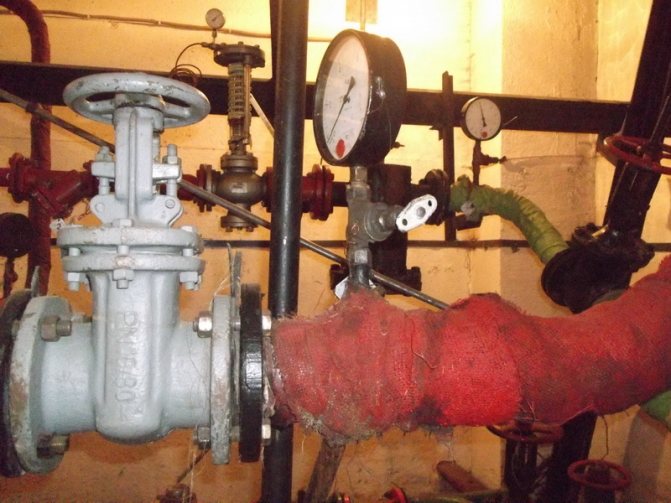

At the supply, this is, as a rule, a valve after the elevator or mixing unit, the last one in the ITP on the pipeline, before the heating distribution directly through the building. On the return line - the first valve on the pipeline of the internal heating system coming from the building to the ITP. So these valves must be closed at the end of the heating season. The system must remain filled with heating water. This is done in order to prevent filling the pipelines of the system with air, and to reduce the corrosion process.
So, the pipelines were closed, the system was turned off. Further, it is advisable to remove the pressure gauges at the ITP (heat point). The fact is that manometers must be verified every year, that is, they must be checked in the appropriate body (center for standardization and metrology) and stamped on it, if everything is in order with it.
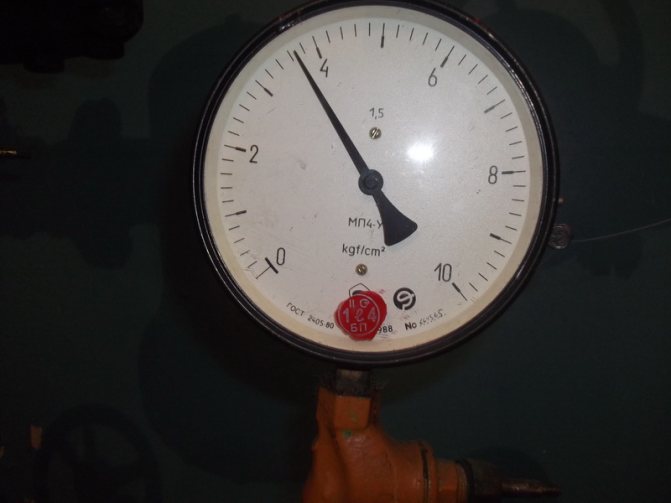

If not everything is in order, then reject. I have about 5-7 percent of the total number of pressure gauges handed over for verification every year.
Well, in general, on this, the measures to turn off the heating can be considered complete. Further preparation for the heating season follows.
What is the heating season
The heating season lasts from the time the utilities turn on the heating until they turn it off. This gap usually begins in the fall and ends in the spring. However, the exact terms are regulated by the relevant authorities.
Heating is supplied through central pipes. There are such constructions in every home. To make it easier for you to understand how central heating works, we suggest that you familiarize yourself with its process in more detail.
How is the process of heating apartments:
- The apartments are heated by piping. Pipes run from the city central boiler house and go to houses and apartments. Here the coolant is water.
- Also, houses can be heated by heat and power plants. In this case, electricity and steam are used as heat carriers.
- The coolant is supplied through a well-developed pipe system. The pipes run in two rows. According to the first, the coolant enters the apartments, according to the second, it returns from them.
- In apartments, heat is distributed through pipes.
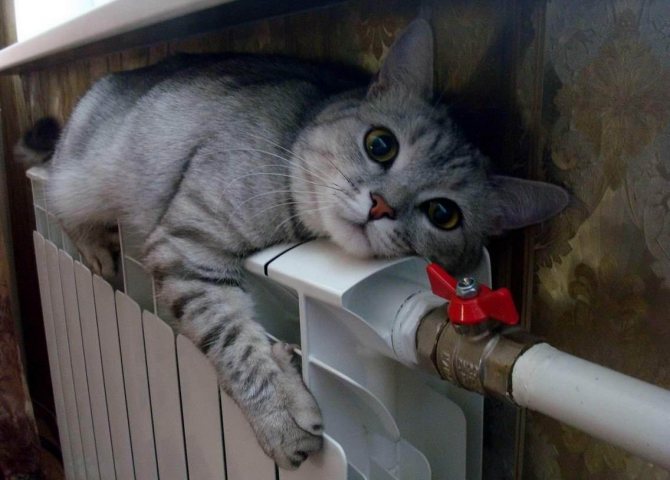

This system has central heating. With its help, multimillion cities are heated. However, you have to pay for such services.
Features of the season
Previously, in the cold season, houses were heated by stoves, and the question of when the heating season begins was never raised. Nowadays, the heating season should start from the day the utilities start heating and end with the day when it is turned off. It usually starts in late autumn and lasts until early spring.
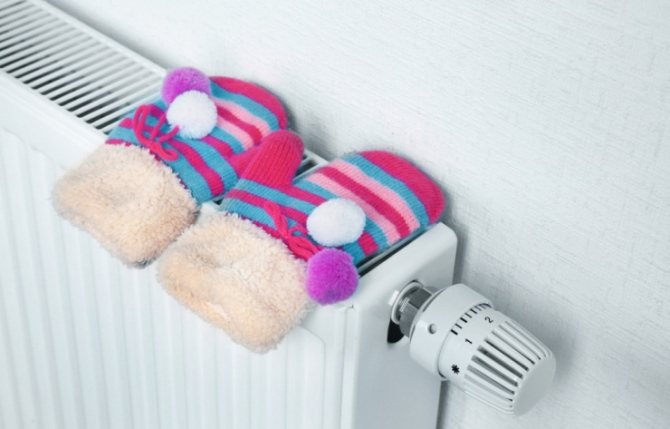

The heating season starts differently everywhere, depending on the onset of cold weather
Heat in apartment buildings is carried out using hot water or steam, which are piped into the housing.
Central heating is carried out as follows:
- From the city's central boiler houses, pipes are laid to the houses and in them are diverted to apartments. This is how heating is carried out using hot water.
- If the house is heated by a heating plant, then steam is used as a heat carrier.
- A branched system of pipes, which are laid in two rows, is intended for the supply of heat carriers. One by one, hot coolant is supplied to the apartments, by others it is returned back.
- In apartments, heat flows through pipes to the central heating radiators. The battery does not heat up immediately, but over several days.
More about the heating season:
Thus, all cities in the country are heated. Residents of the houses pay for central heating.
When will they give heating in 2020 in Moscow this year, the heating season will begin in October
There is a certain instruction, following which the housing and communal services begin the heating season. There are certain prescriptions according to which the heat in houses must appear until October 15 inclusive. There is also a list of institutions, (for example, municipal buildings, schools, kindergartens, hospitals, and so on), the inclusion of heating in which begins earlier than the established deadlines. Also, utilities are guided by the basic principle, that is, they turn on heating if the daily temperature is kept for five days at or below plus 8 degrees Celsius.
With all this, one prescription contradicts another, because if after October 15 the air temperature is higher than plus 8 degrees, the heating will not be turned on yet, since this is not profitable for service providers.
Also, utilities are obliged to supply heat to our houses on behalf of the mayor of the city, as happened last 2020.
If we take into account the statistics, then the heating season in the capital starts from October 1 to October 15. A little earlier than this period, municipal institutions begin to receive heat, and after them administrative buildings.
Turning off heating in St. Petersburg
The situation with the timing of the end of the heating season in St. Petersburg at the time of this writing remains unclear. Earlier, the State Unitary Enterprise "TEK SPb" reported that they do not plan to turn off heating and hot water in the city at least until the end of April.
Typically, the heating season in the northern capital ends in the first or second week of May. It can be assumed that the heating will be turned off after the May holidays - May 12-13, 2020.
In the meantime, the employees of the State Unitary Enterprise "TEK SPb" switched to an enhanced mode of operation. This was done to minimize the number of possible accidents during the holidays.
Ways to heat your home in the off-season


Fan heaters allow you to quickly heat even a large area, and at the same time they consume a small amount of electricity. Since they do not take up much space, they are convenient to store when they are not needed, even in a small apartment. However, it should be borne in mind that their use worsens the air quality - due to the oxidation of the spiral material and the combustion of dust, the oxygen content decreases (about
What to do if it is warm outside and the heating is not turned off
It should be borne in mind that stopping the heating equipment for summer mode cannot be done instantly. Heating is turned off in a specific sequence. First of all, the heat supply of administrative buildings and industrial facilities is stopped. They are followed by residential apartment buildings, and only in the last turn are the batteries in schools, kindergartens and other social institutions turned off.
However, there is some injustice in all of these rulings. At a time when it is already warm outside and the temperature of the pipeline is reduced to a minimum, residents are forced to pay the heating bill in full. You can find a way out of this situation by installing meters on heating devices.
It is also possible to turn off the heat on an individual basis ahead of schedule. To do this, you will need a collective application and the consent of all residents of the house, which is provided to the organization supplying heat to your region. Only then is the shutdown performed.
Heat supply regulations
The legislation of the Russian Federation regulates the heat supply of apartment buildings with the following documents.
- Decree of the Government of the Russian Federation of 05/06/2011 No. 354 "On the provision of utilities to owners and users of premises in apartment buildings and residential buildings."
According to the document, the air temperature in living quarters must be at least + 18 ° C (in corner rooms at least + 20 ° C). In areas with a temperature of the coldest five-day period of -31 ° C and below, the temperature in living quarters must be at least + 20 ° C (in corner rooms at least + 22 ° C).
- Federal Law "On Heat Supply" dated July 27, 2010 No. 190-FZ.
Defines the powers of state authorities and local governments in the field of heat supply, establishes the principles of economic relations between suppliers and consumers in the field of heat supply, and describes the state policy in setting heating tariffs.
- SanPiN 2.1.2.2645-10 "Sanitary and epidemiological requirements for living conditions in residential buildings and premises."
Appendix 2 lists the optimal and acceptable temperature ranges for rooms in winter and summer.
- Resolution of the State Construction Committee of the Russian Federation of September 27, 2003 No. 170 "On the approval of the Rules and norms for the technical operation of the housing stock".
This section describes the procedure for preparing residential buildings for the winter period, including the procedure for checking and testing the heating system.The work of the emergency dispatch service is also regulated - the emergency order in the heating system must be eliminated immediately.
Preparing the housing stock for the 2017-2018 heating season
Comprehensive preparation of housing and communal services facilities for seasonal operation is regulated by the regulatory requirements for people's living in the autumn-winter period.
- elimination of cracks and holes in the outer walls, basement, attic floors, roof and places of their docking with each other, windows or doors;
- restoration of plastering, roofing, etc .;
- tidying up technical rooms;
- checking the integrity of window and door fillings, door closers and porches;
- conducting trial fireboxes of central heating and stoves;
- ensuring the drainage of atmospheric and melt water from the slopes into the basement, window pits;
- checking the quality of waterproofing of foundations, basement walls and basement;
- checking the operability of heating furnaces and installations with gas heaters, chimneys, gas ducts, internal systems of heat, water and power supply.
Based on these recommendations, as well as the shortcomings identified as a result of the spring inspection of the apartment building and its engineering systems, the management company or HOA develops a plan of measures for preparing for the heating season and approves it in local government bodies.
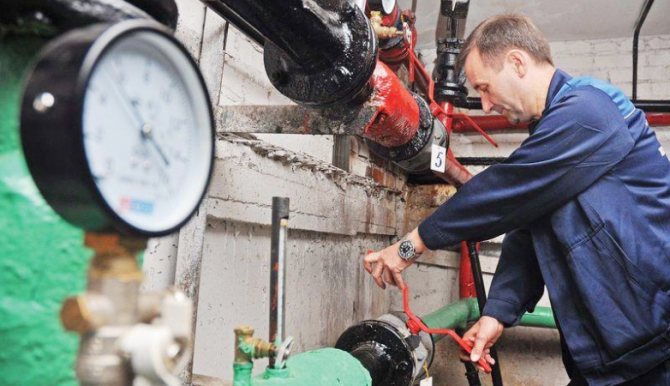

The preparation plan for the heating season of the management company, in addition to technical work, includes a number of organizational measures:
- retraining and advanced training of employees providing operation and emergency repairs of boiler houses, heating points, engineering systems;
- instructing emergency service workers, maintenance workers, janitors;
- technical inspection and maintenance of vehicles, communications, equipment, tools, cleaning equipment, inventory;
- preparation or restoration of diagrams of in-house engineering systems;
- audit of heating units, operability of metering devices (with replacement, if necessary), certification of the integrity of the seals.
In addition, management companies and HOAs in preparation for the heating season must take into account other requirements of Rules 103:
- the degree of readiness of heat-consuming installations for operation and their provision of the mode of consumption of heat energy specified in the resource supply agreement;
- no debt for the supplied heat energy, heat carrier;
The main problem in preparing for the heating season is the highest level of consumer debt for the supplied energy resources. The debt in the housing and communal services sector is more than one trillion rubles, of which 800 billion are debts of management companies to resource supplying organizations.
Mikhail Men, Minister of Construction and Housing and Utilities of the Russian Federation
In accordance with the Rules for the maintenance of common property in an apartment building (approved by Decree of the Government of the Russian Federation of August 13, 2006 No. 491), the responsibilities for preparing in-house engineering systems for seasonal operation are assigned to the owners of residential premises of an apartment building (in the case of direct management) or HOAs and managers companies. Financing of events is carried out at the expense of the owners.
Alternative Boiler House Law
As for the preparation of the heating network for the 2017-2018 heating season, control over it will be entrusted to new structures - unified heat supply organizations (ETO).
On July 31, 2020, President Putin signed the federal law "On Amendments to the Federal Law" On Heat Supply "and Certain Legislative Acts of the Russian Federation on Improving the System of Relations in the Field of Heat Supply".
The document, which received the popular name "The Law on" Alternative Boiler House ", changed the system for regulating heat tariffs.The new model provides for the establishment of a ceiling price level for the heat carrier, which is called the "alternative boiler house". This is a calculated indicator. It corresponds to the cost of one gigacalorie of thermal energy in case consumers want to build their own (alternative) boiler house.
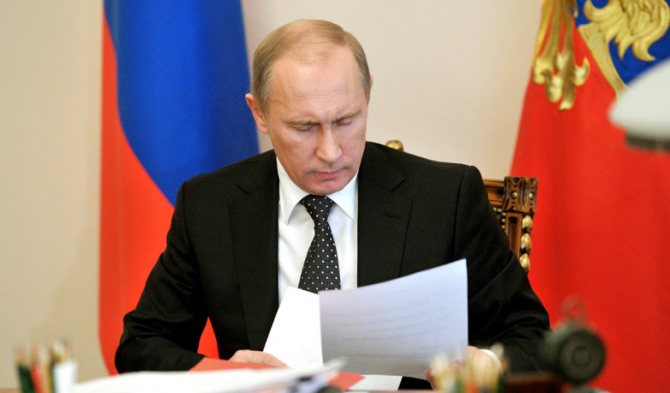

In addition to ensuring an uninterrupted process of heat delivery from the producer to the consumer, ETO will be responsible for the entire range of measures for the construction, reconstruction, modernization of heat supply facilities, as well as for their preparation for seasonal operation.
However, the maintenance of in-house networks, the installation of heat meters and the preparation of the heating unit for the heating season will remain under the jurisdiction of management companies and HOAs.
Duration - heating season
The duration of the heating season for the middle latitudes of the USSR is 150 - 180 days a year, and for the southern regions it is reduced to 60 days. The relatively small number of hours of operation of heating and ventilation consumers during the year is their second distinguishing characteristic.
The duration of a particular heating season usually differs from the average duration recorded in the norms. In cold autumn, for example, heating of buildings starts earlier than the established average and the duration of the heating season increases.
In view of the length of the heating season in most regions of our country and the importance of improving the homes of workers, the issue of sanitary and hygienic conditions created by the heating system is of exceptional importance.
Since the annual savings are directly proportional to the duration of the heating season and the average outside temperature for the heating season, automation should be carried out primarily in boiler houses located in more severe climatic zones.
Table 17 shows data on the duration of heating seasons and the proportion of heating boilers in each of the climatic zones.
The resulting formulas establish the functional dependence of the gas consumption on the duration of the heating season, the average outside temperature for the heating season, the internal temperature maintained in the premises, the water consumption in the circulation system and other factors that determine the heat losses of the building, the nature and quality of the main technological equipment and fuel.
As a result of statistical processing of table. 17 we get the national average duration of the heating season and equal to 227 days.
Since this territory includes the main range of variation in the duration of heating seasons, most of the rest of the country, located on the territory of other union republics, can be included in any of these climatic zones.
In fig. 36 shows the dependences of the total annual savings of AE funds on the duration of the heating season with a different number of automated boiler houses, respectively, when using electric and pneumatic automation systems. In this case, the wind speed is assumed to be about 5 m / s.
| Integral graph of the total load of the area. |
If the annual heat consumption for heating is known, then, knowing the duration of the heating season, it is easy to determine the average heat consumption.Maximum heat consumption for heating can be taken for approximate calculations equal to twice the average consumption.
Ap is the number of boiler houses in each of the conditional climatic zones, where the corresponding durations of the heating seasons can be taken constant.
So, for example, for the city of Kiev s / nr. - 21 C with a heating season duration of 3 600 h, the duration of standing outside air temperatures from - 5 to - 10 C is 660 h from - 10 to - 15 C 300 h and from - 15 yes - 21 C 150 h Therefore, from hot water boilers , which are included in the work only after the full use of the thermal power of the extraction, usually 15 - 20% of the total annual heat supply from the CHPP is released.
In fig. 37 shows the dependences of the payback period of capital costs for the automation of heating boiler houses on the duration of the heating season.
Two climatic zones are added to the table, including some southern regions of the country that have a short heating season.
Who sets the date for the start of the heating season in Moscow
In Moscow, there are certain standards when they turn on heating according to the standards.
Heat is supplied under the condition that for 5 days the average daily air temperature is kept at the limit of 8 degrees and below. Despite the fact that it is still warm outside, the premises start to cool down quickly.
According to forecasters, such a temperature in the Moscow region is set no earlier than in the second decade of October.
Several years ago, a norm was adopted according to which the regional authorities have the right to make a decision on the premature switching on of heating, if there are grounds for this.
In Moscow, the Moscow United Energy Company is responsible for the start of the heating season.
Thus, MOEK cannot start supplying heat without receiving an appropriate order from the deputy mayor for housing and communal services.
Technically, heat can be supplied to one, specific house, however, this practice is not common. Schools and clinics, hospitals and kindergartens are connected in stages, and only then at home.
In the last place, heat is supplied to the enterprises - it depends on the degree of readiness of the organization itself.
According to available data, the average time to turn on heating in Moscow is mid-October.
If five or more days have passed, it is cold outside, and heating was still not supplied, you need to file a complaint against the management company. The problem can be technical or economic.
In the first case, after checking the pipes by a specialist and replacing the broken parts, the issue will be resolved.
When will the heating be turned off in Moscow in 2020
As it became known, the period of the heating season is determined differently in each city. For example, as far as the Siberian region is concerned, heat is supplied there for seven months. A similar situation is developing with St. Petersburg.


Since the Far North is famous for its frosts, there is warmth in the houses there for nine months a year. But in Volgograd, the end of the heating season often comes earlier than in other cities. If individual heating is installed in an apartment or house, then there the owners decide for themselves when to stop supplying heat to their home.
People are interested in the question of the period of the heating season in order to correctly distribute the family budget, and now, when there are special norms, you can easily distribute your finances. Before the changes took place in this area, the heating season normally began in mid-October.
Also, an important condition for the supply of heat was that the heating was turned on exactly on the day off. This was done so that the owners were at home and were able to observe the process in order to avoid emergencies.
In this heating season, heat entered the houses not according to the schedule, but according to the new standard after the temperature was lower than the set for five days. This approach allows Moscow residents to plan their budget and provide them with a comfortable stay in their homes, since the air temperature will be acceptable.
The authorities came up with this method last year at a time when they were distributing the budget for the next three years and drawing up a schedule for work in the field of heating systems.
So far, this approach has not been beneficial to Muscovites, and many people do not feel the positive effect. According to experts, they will be able to truly evaluate such a system only after a couple of years. There are some regions in which it is impossible to assess with exact certainty the positive impact of this approach, but in a global sense, the system should please citizens.
If someone is interested in finding out all the costs of the heating season, then this can be done quite simply, you need to visit the website of the city municipality.
According to preliminary data, the official end of the heating season is scheduled for April 24.As usual, kindergartens and medical institutions will be the last to be disconnected from the resources, and heat will cease to flow into them only five days after the designated date.
What to do if not included
What should the consumer do if the heat supply company does not fulfill its duties? Try to force you to recalculate, because you did not receive the service, although you may have already made a payment for heat. An application must be submitted to the operating organization, which must send a specialist with a certified thermometer. If the temperature in the apartment is below the standard (20 ° C), you must recalculate it next month.
There are certain heating standards. They are the same for all regions, but the systems are turned on at a time when the average daily temperature in the city remains for several days at the rate set by the standards.
Heat values may differ depending on the type of room. In hospitals and kindergartens, heating is supplied earlier than in apartments.
If the standards are not complied with, an application should be submitted to the controlling organizations, after which a check will be carried out.
What is the recommended temperature in the apartment?
Temperature standards in residential premises are developed and enshrined in legislation. IN SANPiN 2.1.2.1002-00 the exact limits of permissible temperatures in apartments for cold and warm seasons are indicated.
Compliance with these limits generally obligatory for all residential service companies. Maintaining an acceptable, or even better, optimal temperature in a permanent residence is a guarantee of health and well-being.
IN SANPiN 2.1.2.1002-00 norms temperatures are:
If it has come warm season:
- for rooms temperature regime is allowed in the range from 20 to 28 ºС.
IN cold season:
- on kitchen, in toilet, bathroom room allowed from 18 to 26 ºС;
- for rooms 18-24 ºС.
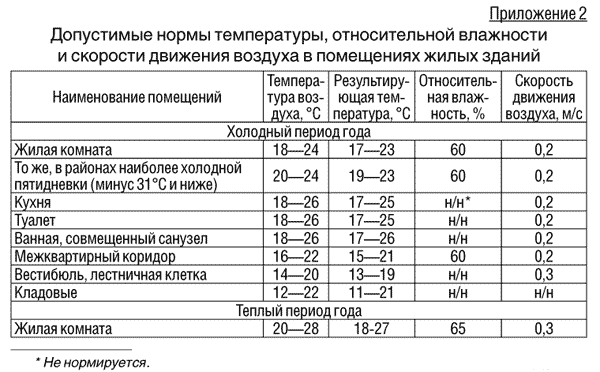

In addition to the permissible, the scope of the optimal temperature is determined. The difference between these two concepts is that the permissible temperature is the one whose boundaries are considered acceptable and not contradicting the rules for heating supply. Optimal the same temperature is a parameter close to ideal for human health.
Therefore, it is recommended that residents do their best to maintain optimal temperature:
- insulate the apartmentif necessary to raise the temperature;
- ventilateif the temperature is too high.
The optimal temperature for a room in an apartment 22-25 ºС in warm weather, 20-22 ºС - in the cold. In the kitchen and in the toilet, the optimal value is 19-21 ºС... These indicators should be equal to determine compliance with temperature standards in apartments.
[rek_custom1]



